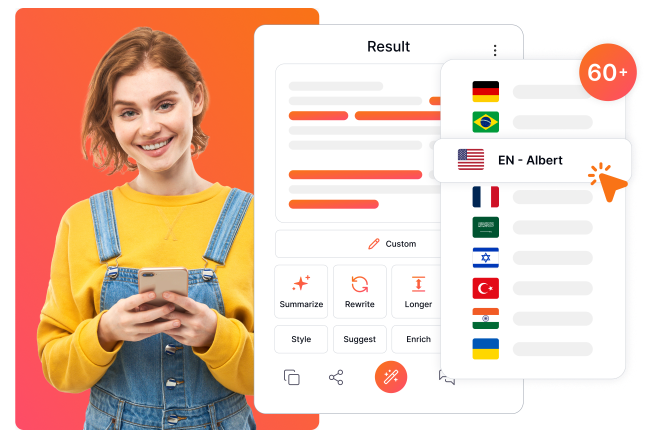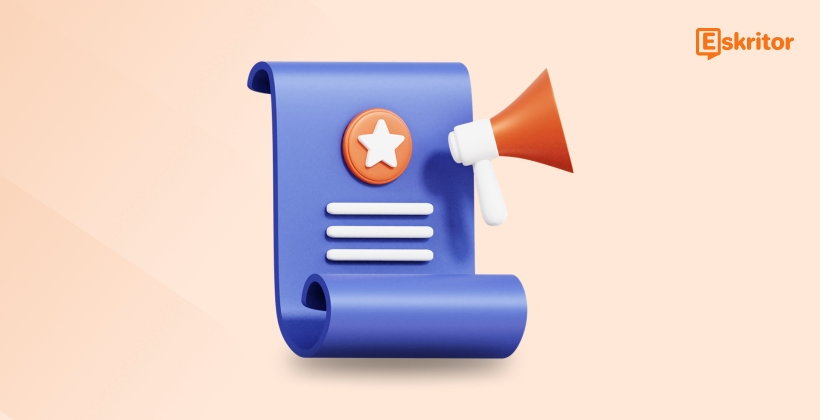How AI Writers Are Transforming Content Creation
How AI Writers Are Transforming Content Creation
Blog Article
AI Editing Features That Improve Your Writing Workflow
Synthetic intelligence (AI) writing engineering has developed quickly in the last decade, reshaping just how we create and connect to published content. From grammar correction tools to AI-generated novels, the options seem limitless. But wherever exactly is this technology going? Let's discover the inventions, difficulties, and possible potential of ai grammar checker.

How AI Writing Technology Performs Nowadays
At its core, AI writing engineering relies on Normal Language Handling (NLP) and device learning. These systems enable models to know, create, and improve human language. Resources available nowadays excel at responsibilities like:
1. Content Generation
AI has reached a point wherever it may generate total blog posts, social media captions, and actually news articles. Some designs can handle mimicking human publishing styles therefore successfully that distinguishing between AI- and human-written content is now significantly difficult.
2. Grammar and Fashion Recommendation
AI-powered writing personnel don't just always check for syntax and spelling mistakes; additionally they offer suggestions to boost tone, quality, and syntax, creating complex writing available to a wide audience.
3. Belief Evaluation
AI can examine the mental tone of a bit, allowing businesses to assess how their communications can resonate with readers. That is particularly of use in advertising and customer interaction.
The Current Traits in AI Publishing Technology
Many traits are surrounding the following stage of AI-powered writing tools:
• Personalization
AI writing engineering is increasingly capable of tailoring material to personal preferences. Versions may adapt to a user's writing fashion, ensuring the output feels authentic.
• Multilingual Abilities
Several AI resources are increasing their global reach by giving increased translation characteristics and help for multiple languages.
• Enhanced Study Functions
AI resources today get the ability to analyze substantial amounts of information and present fact-checked, well-researched publishing in seconds, simplifying the procedure for experts in industries like legislation, financing, and journalism.
What the Future Keeps for AI Publishing Engineering
1. Improved Creativity
While recent AI is successful at generating material, their creativity continues to be limited by designs within their training data. Future AI isn't only estimated to help but to create original, topical works that challenge individual imagination.
2. Easy Venture
Envision an AI that performs along side you in real-time, completing your phrases, completing live edits, and even brainstorming ideas. AI publishing methods may soon become co-authors, enabling creativity to movement uninterrupted.
3. Moral and Available Design
With growing problem about plagiarism, misinformation, and error, designers work toward more translucent AI education procedures and ethical implementation. Potential instruments will more than likely offer more extensive citations and actions to ensure accountability.
Issues and Concerns
The progress of AI publishing technology isn't without hurdles, including:
• Moral Dilemmas

Who owns content created by AI? How do we guarantee AI-generated content isn't distributing misinformation? These debates remain unresolved.
• Human-AI Harmony
May AI match human imagination or entirely change particular jobs? Many authors and artists be worried about their relevance within an AI-driven world.
• Convenience Separate
Not all companies or parts have similar usage of cutting-edge AI methods, increasing questions in regards to the influence with this technology on world wide inequality.
Changing the Way We Write
AI writing engineering is still in its infancy in comparison to their potential. Whether you are students making essays, a material marketer targeting specific audiences, or perhaps a novelist seeking enthusiasm, AI resources may continue to revolutionize the publishing process. The following decade claims breakthroughs that blend human ingenuity with unit intelligence, creating a potential where writing is better, available, and impactful than actually before.
Report this page